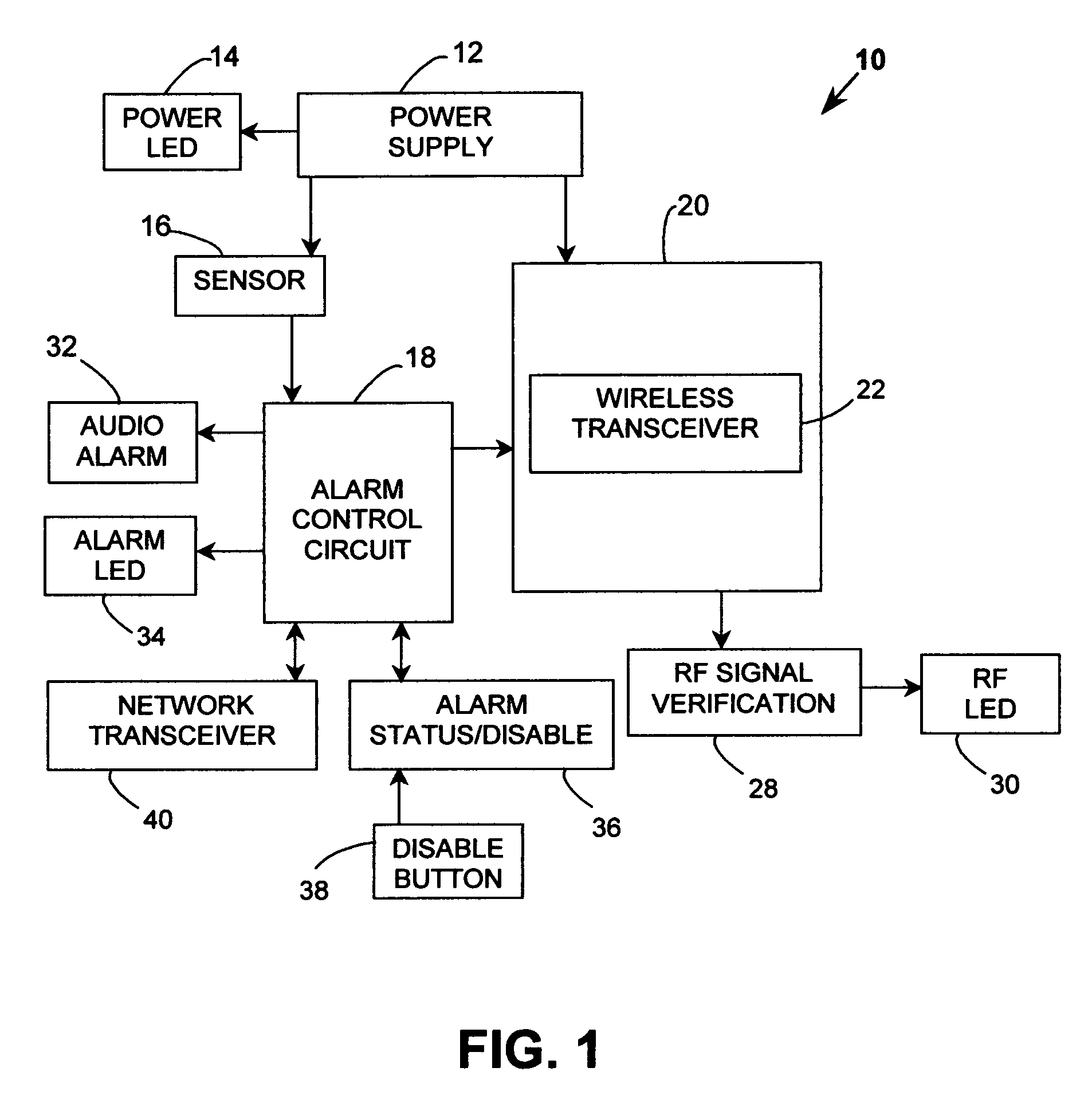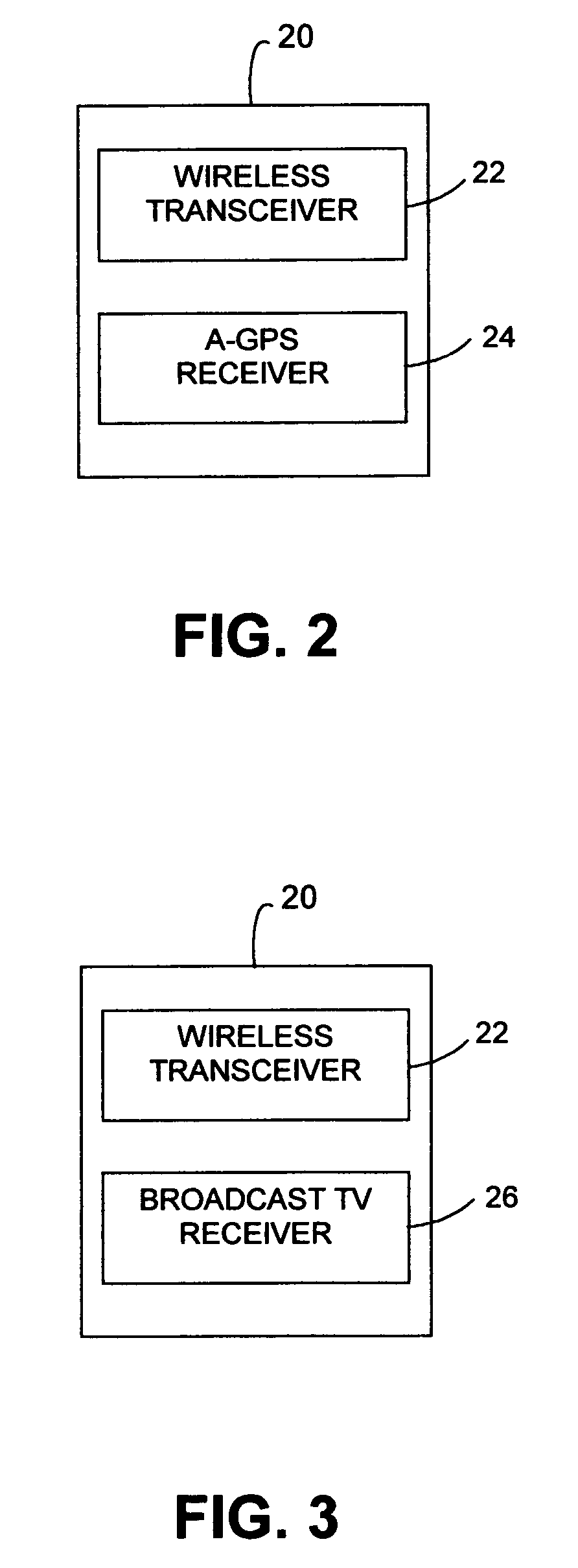Combination alarm device with enhanced wireless notification and position location features
a combination of alarm devices and wireless communication technology, applied in fire alarms, instruments, electric signalling details, etc., can solve the problems of increasing the risk of fire, so as to enhance the cellular/pcs infrastructure and enhance the effect of position location determination
- Summary
- Abstract
- Description
- Claims
- Application Information
AI Technical Summary
Benefits of technology
Problems solved by technology
Method used
Image
Examples
Embodiment Construction
[0040]In the description that follows, certain specific details are set forth in order to provide a thorough understanding of various embodiments. However, one skilled in the art will understand that the embodiments may be practiced without these details. In other instances, well known structures associated with smoke and carbon monoxide alarms, wireless networks, and broadcast television networks may not been shown or described in technical detail to avoid unnecessary obscuring descriptions of the embodiments. Unless the context requires otherwise, throughout the specification and claims which follow, the word “comprise” and variations thereof, such as, “comprises” and “comprising” are to be construed in an open, inclusive sense, that is as “including, but not limited to.”
[0041]One embodiment of the combination smoke alarm with enhanced wireless notification and position location features is shown as alarm device 10 in FIG. 1. Alarm device 10 components are preferably confined in a...
PUM
 Login to View More
Login to View More Abstract
Description
Claims
Application Information
 Login to View More
Login to View More - R&D
- Intellectual Property
- Life Sciences
- Materials
- Tech Scout
- Unparalleled Data Quality
- Higher Quality Content
- 60% Fewer Hallucinations
Browse by: Latest US Patents, China's latest patents, Technical Efficacy Thesaurus, Application Domain, Technology Topic, Popular Technical Reports.
© 2025 PatSnap. All rights reserved.Legal|Privacy policy|Modern Slavery Act Transparency Statement|Sitemap|About US| Contact US: help@patsnap.com



